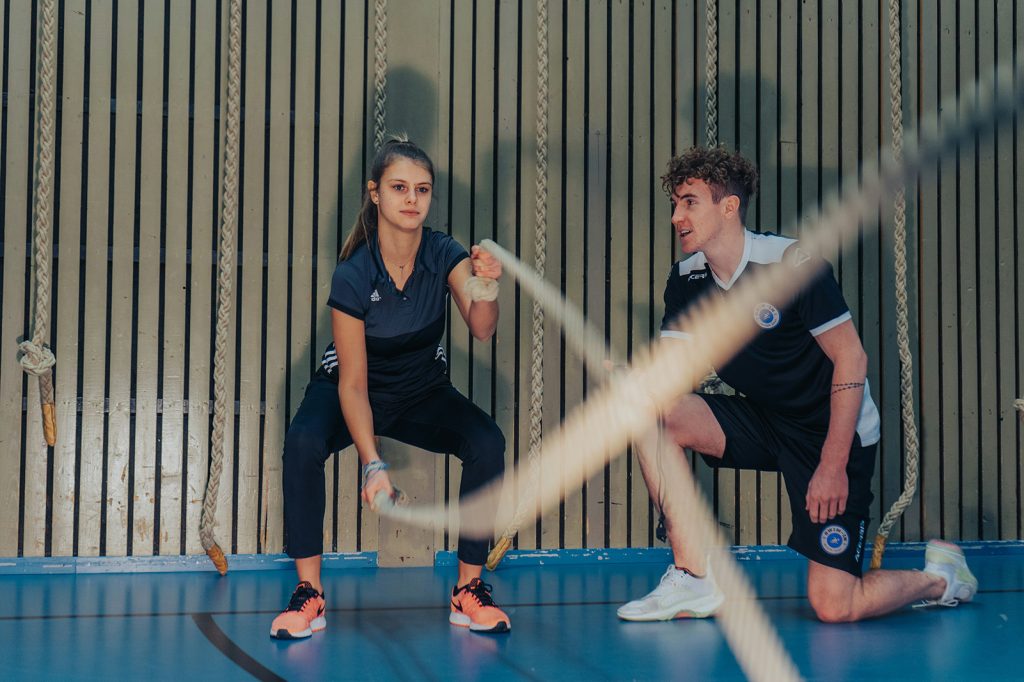Failing Forward: Fostering a Practice Culture that Accelerates Learning and Confidence
Coaches everywhere are paying much more attention to the actual processes of learning. We are realizing that failure is an important part of the process of learning. You may have heard the phrase, “If they haven’t learned, then I haven’t taught”. Learning and improvement are accelerated when the learner experiences failure. Coaching is teaching. The better a coach is at teaching, the greater the competitive advantage. Assuming that failure is an important catalyst to strong learning, how does a coach make the practice environment a place in which it is safe to fail.
A practice environment where failure isn't feared but embraced by both the coach/teacher and the learner is an important part of an optimum learning process. In the pursuit of excellence, Daniel Coyle's 'The Talent Code' and Trevor Ragan's insights from ‘The Learning Lab’ shed light on the power of pushing boundaries and encouraging the learner to practice at the "edge of failure." How do you react after your athlete makes a mistake in practice? Listen to Carol Dweck’s TED Talk on “The Power of Yet”.
Old coaching habits are often hard to change…especially during the intensity of an in-season practice. Here are 10 compelling ways coaches can transform practice environments into safe havens for mistakes, fostering an atmosphere of “failing forward”, where learning thrives, and improvement is accelerated as the natural outcome.
- Consistently Emphasize Learning Over Results: Consistently make it clear that the most important goal is to become a strong learner. This should happen before every practice and remain a strong theme throughout each practice. The coach’s response after a mistake must continually make it clear that failures are a vital part of the learning process.
- Establish Open Communication: Encourage players to share their thoughts, concerns, and questions – to the coaches and their teammates. Make it clear that communication is valued and that mistakes are part of the learning process.
- Emphasize Growth Mindset: Promote a growth mindset by praising effort and resilience rather than just results. Teach players that the quickest improvement comes through learning from mistakes and overcoming challenges.
- Set Realistic Expectations: Help players understand that mistakes are a natural part of the learning journey. Set achievable goals and emphasize progress over perfection.
- Use Positive Reinforcement: Focus on positive reinforcement rather than punishment. Celebrate small victories and efforts, creating a positive atmosphere that encourages risk-taking. Catch your learners, “Doing it right.”
- Provide Constructive Feedback: Frame feedback in a constructive manner, emphasizing what can be learned from mistakes. Use the "feedback sandwich" approach, where constructive criticism is sandwiched between positive comments.
- Encourage Risk-Taking: Foster an environment where players feel comfortable taking risks and trying new things. Encourage creativity and experimentation, even if it leads to temporary setbacks. By using a phrase like, “Let’s experiment with….”, and then partnering with the player(s) to find out how to best perform something new, the fear of failure is removed. If you use a whiteboard in practice, create a special column labeled, “Experiments”.
- Create a Learning Culture: Establish a culture that values learning and improvement over winning at all costs. Make it clear that the focus is on personal development and skill enhancement. I have found that by saying something like, “I don’t care if you miss the next 10. Our focus right now is your feet.” Players seem to really like this.
- Model Acceptance of Mistakes: Demonstrate that everyone, including coaches, makes mistakes. Share stories of your own experiences and highlight the lessons learned from setbacks.
- Promote Team Support: Encourage teammates to support each other, especially after mistakes. This not only fosters a sense of camaraderie, but when players see mistakes as opportunities to help and learn together, it creates a supportive environment.
Creating a practice environment where it’s safe to fail requires a deliberate and supportive approach from everyone - the coaches and teammates. Remember that regardless of the type of drill used, your response after a mistake is crucial. Your reaction, verbally and behaviorally, will be magnified in the learner’s mind. You must be “Next Play” focused (See “Performing Under Pressure: The Transformative Influence of a ‘Next Play’ Coaching Emphasis”) Catch your athletes ‘doing things right” rather than focusing on the mistakes of the moment.
By incorporating these strategies, coaches can create an environment that actively embraces failure as a crucial component of the learning process. This approach can lead to greater player development, increased confidence, and a positive team culture…all of which will result in greater team success.
Huddle Up!
Let us know what you think! Share your experiences, stories or thoughts that guide your coaching on our new Paragon Coaching Resources Facebook page. “Like” or “Follow”. It’s always helpful for coaches to hear amazing stories. I’m looking forward to hearing from you soon.
Cell: 1-559-287-8389
Email: [email protected]

